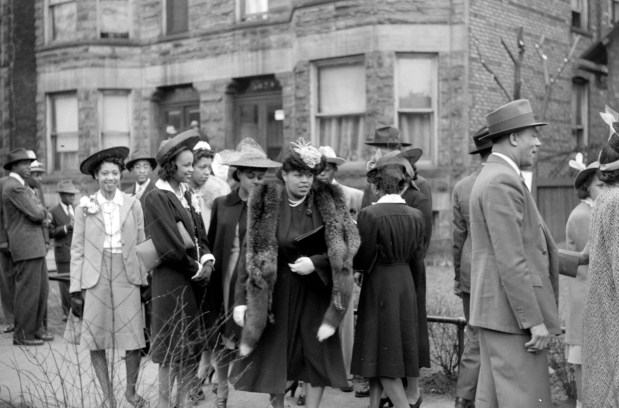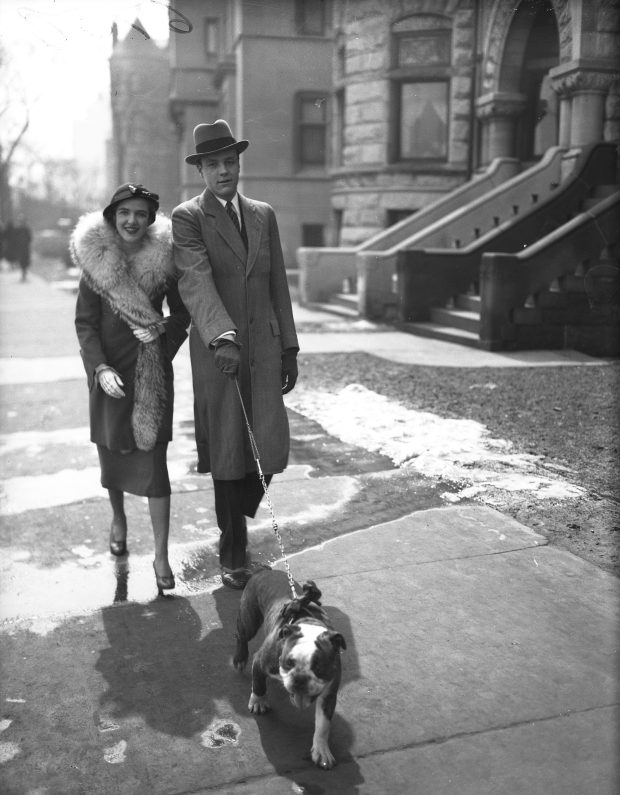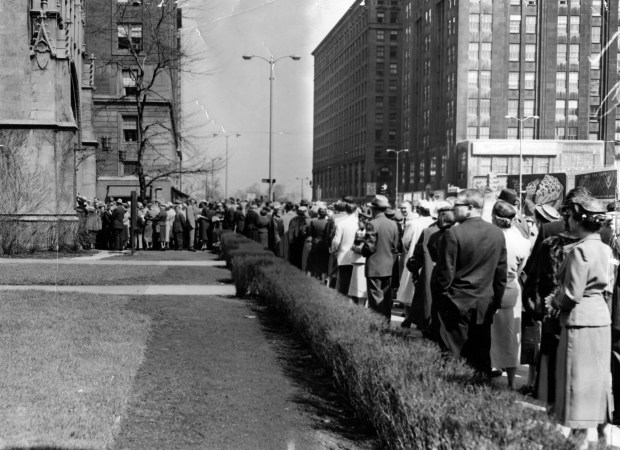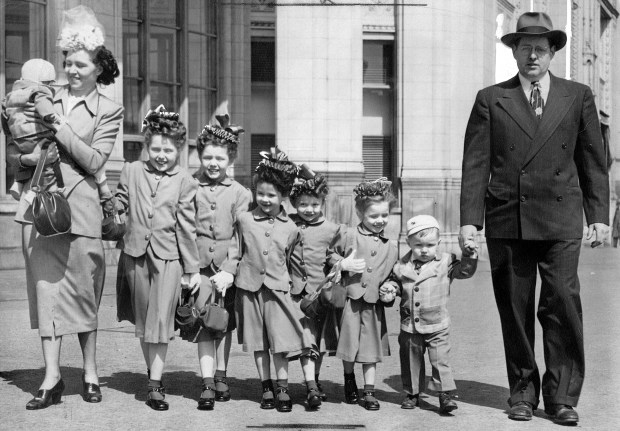The Easter Parade is a mashup of the sacred and the profane: a Christian holiday marked by a fashion show of sorts that was once celebrated by a Jewish immigrant.
After 15 years of struggling to express the parade’s lyrical message, Irving Berlin wrote a musical tribute in a 1933 Broadway review:
“In your Easter bonnet with all the frills upon it. You’ll be the grandest lady in the Easter Parade.”
Over the years, Easter services are traditionally packed in all corners of the city. In 1996, the Tribune noted that some Chicagoans would celebrate Easter in stately cathedrals with professional musicians.
“But many others will gather in small store front churches tucked between cut-rate liquor stores and corner food marts, where the sound of gospel music, of tambourines and clapping hands spills into the streets.”
In both the Gold Coast and Bronzeville, what followed Easter services wasn’t truly a parade. There weren’t organized contingents directed by parade marshals. Instead, dressed to the nines, families simply enjoyed a leisurely walk after church.
The Chicago Defender dubbed the post-church perambulation a “stroll.”
“Young misses, married ladies, and old maids with their escorts will be on dress parade,” the paper predicted on the eve of the 1914 Easter Parade along 35th Street.


Bonnets and clothing could be on the flamboyant side.
“I believe that ten downtown florist stores did $25,000 worth of business today,” a store manager told the Tribune on the eve of Easter in 1902. “Women tomorrow will wear huge bunches of violets, sometimes containing 400 blossoms.”
The Easter Parade in New York became famous in the 19th century, and the tradition arrived in Chicago vulnerable to racial antagonisms. In 1896, the Tribune reported that some members of the Knights Templar, a Catholic military order, wouldn’t march unless they were assured that “no colored man will participate in the parade, even in so humble a capacity as salaried standard bearer.”
The fraternal order had Black members, and the previous year someone reported that an African American carried one of their banners.
“If any man is so thick skinned to object to that he isn’t a credit to his organization,” said Gilbert W. Barnard, the order’s General Recorder, “and he wouldn’t derive any benefit from the church he was about to attend.”

In 1939, the Chicago Daily News reported that: “music followed paraders wherever they went.” The organist at the Drake Hotel serenaded luncheon diners with “In Your Easter Bonnet.” At the ultra-exclusive Casino Club “a Hungarian orchestra” sang out Viennese waltzes.
The path to those opulent celebrations was set by an ancient Roman emperor, Constantine the Great. In the fourth century, a vision inspired him to become a Christian, whereupon he found himself presiding over a flock that didn’t agree on the date of Easter.
The biblical narrative says that Jesus was in Jerusalem celebrating Passover when he was martyred. But computing the relationship between an event on the Hebrew calendar and the Roman calendar is formidable.

So the Emperor Constantine convened the Council of Bishops that decided Easter is the first Sunday after the first new moon after the spring solstice.
But the emperor was still troubled that some celebrated the holiday “with festivities and enjoyments, while others submit to appointed fastings.” Constantine’s discontent morphed into a proto-Easter Parade.
Wanting a display of Christian virtue that would inspire his pagan subjects to convert, he wrote instructions for enhancing the enjoyment of Easter, although it’s still a subject of debate whether those guidelines including having his subjects dress in their finest garb and parade.

Constantine’s Easter-date truce was shaky in his own day. In latter centuries it was a victim of ever more bitter theological disputes. The churches of the East and West split, each taking its own date for Easter. Protestants split from Catholics and then subdivided.
Yet across all those differences, Christians feel the common tug of a tradition. Whatever date their Easter brings them to church, afterward many take a leisurely stroll.
Have an idea for Vintage Chicago Tribune? Share it with Ron Grossman and Marianne Mather at rgrossman@chicagotribune.com and mmather@chicagotribune.com.



